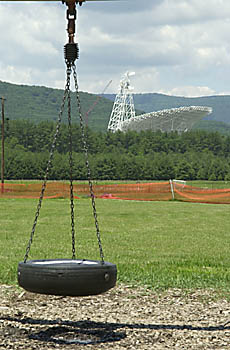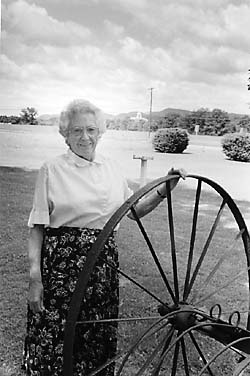
Living In the Quiet Zone
By Belinda Anderson
Photographs by
Michael Keller
Huge, white, man-made blossoms perch on squatty stalks in a remote mountain valley in Pocahontas County. Astronomers call them radio telescopes. Scientists use these gigantic tools to capture faint electrical signals from outer space. Yet these structures seem almost organic, as first one then another rotates gently, angling each concave face to better listen for whispers from the sky.
These quiet giants have changed the landscape of Deer Creek Valley and the lives of its inhabitants. In 1958, when a National Radio Astronomy Observatory facility was established in Green Bank, the remoteness of the area made this a good site to collect signals with a minimum of man-made interference. These huge telescopes soon brought the world to the valley.
Velma Turner was a young farmer's wife then, never expecting that the new observatory would deliver people of other cultures –scientists and their families – right to her doorstep. Because of the presence of the observatory, one day she found herself taking tea with a German, on another occasion learning from an Indian how to wrap a sari.

One of her sons goggled at the gigantic radio telescope equipment being trucked by his house, never imagining that one day he would be an electronics engineer at a corporation that provides high-tech equipment for submarine sonar systems and spacecraft computers. Another son trained his telescope at the darkened, star-studded sky. His future would lead to the observatory itself, where today he works to help coax the secrets from the universe.
The observatory still looms large in the life of Velma Turner – literally. From her white frame house, she can see the sunlight bouncing off the new Green Bank telescope: with three acres of surface area and at 16 million pounds, the largest fully steerable radio telescope in the world.
You can read the rest of this article in the Fall 2000 issue of Goldenseal, available in bookstores, libraries or direct from Goldenseal.